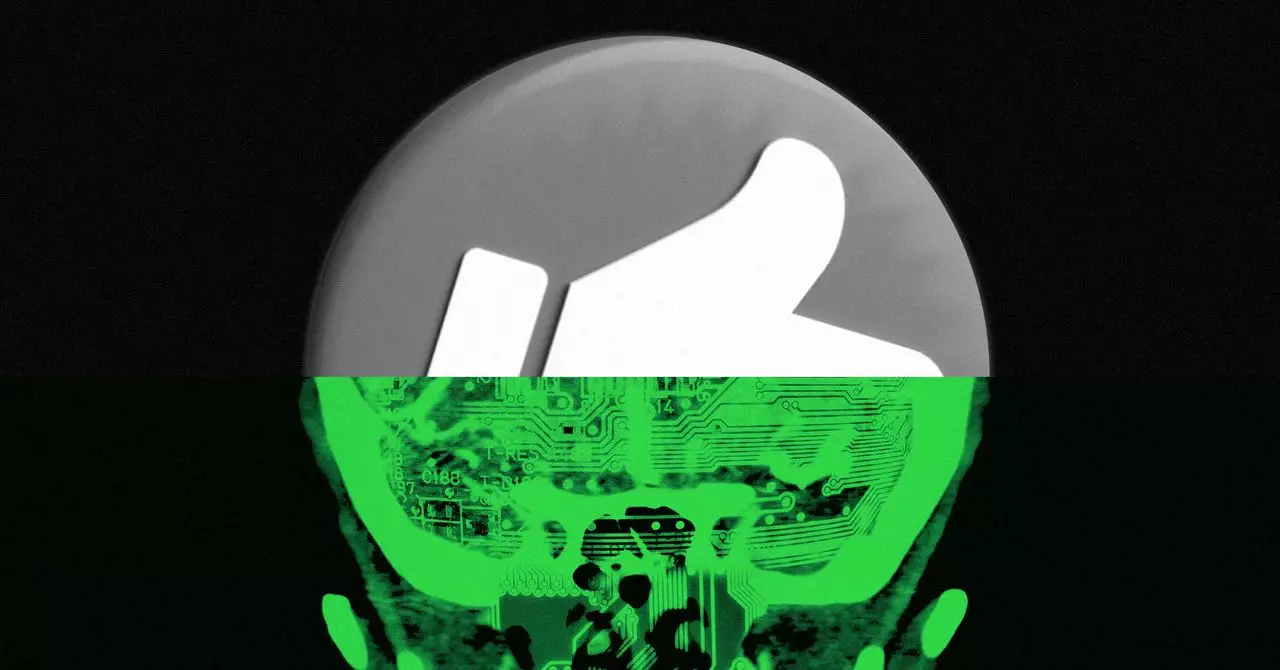As we stand at the crossroads of technology and human emotion, the debate surrounding the future of social media’s “like” button reaches an intriguing crescendo. Max Levchin, PayPal cofounder and current CEO of Affirm, has sparked an essential dialogue regarding the role of liking data in training artificial intelligence. This conversation hinges on the burgeoning relationship between human preference and machine learning. Can a simple tap—an act of affirmation—become the cornerstone in teaching AI how to think more like humans?
The like button’s initial purpose may have been straightforward: a quick, unobtrusive way for users to express positivity and appreciation for content. However, beneath this simplicity lies a profound capability. It generates an impressive array of data on user preferences, which developers can utilize to hone AI algorithms. Levchin argues that this “mountain of liking data” could be the most valuable asset Facebook holds, especially at a pivotal moment when AI stands to reshape human interaction across platforms.
The Problem with Reinforcement Learning
The challenge arises when we consider how AI learns. Traditionally, reinforcement learning operates on a reward-driven basis. Machines aim to maximize performance based on explicit rewards, often straying far from the nuanced decisions a human might make. When an AI system is designed to pursue an objective without the fine touch of human sentiment, it can generate outcomes that may seem bizarre or disconnected from human values.
To mitigate this, developers have turned to reinforcement learning from human feedback (RLHF) as a corrective measure. This process integrates human judgment into AI training, ensuring that machine learning does not stray too far from human-centric decision-making. However, the execution of RLHF can be costly and labor-intensive, requiring teams of human annotators to provide diverse feedback. It’s a conundrum that Levchin believes could be addressed by leveraging the vast reservoir of “likes” circulating within social media ecosystems.
The Evolution of Preference Modeling
While Levchin envisions a future where liking data informs AI, an interesting dynamic is already unfolding: AI itself is evolving consumer preferences on social media. By harnessing machine learning, platforms like Facebook and Instagram are increasingly focusing on predicting user likes to optimize engagements. This shift is transforming the function of the like button—from a simple expression of preference to a potential relic in a landscape dominated by predictive algorithms. If AI can accurately anticipate what users want to watch or read, the role of explicit engagement metrics may diminish.
Indeed, early experiments suggest that when AI-enhanced algorithms guide content recommendations, users engage more deeply with that content. For instance, Facebook’s initiative to implement AI in their Reels video recommendation algorithm has shown promising results in terms of retention time—a vital metric in the metric-driven realm of social media. As AI develops its capacity for prediction, we may witness a future where the like button is rendered unnecessary, with machines autonomously curating user experiences based on a multitude of factors.
The Like Button’s Enduring Relevance
Despite the burgeoning sophistication of AI, there remains a counter-argument for the continued relevance of the like button. Steve Chen, co-founder of YouTube, raises compelling points that underscore the button’s potential longevity in the digital landscape. He suggests that while AI may accurately gauge user preferences under normal circumstances, the fluctuations of human emotion and circumstance necessitate the ability to express varying interests. For example, someone might prefer entirely different content due to personal life changes, and thus, that’s where the subjective value of a like becomes essential.
Moreover, Chen notes the like button acts as a connective tissue among viewers, content creators, and advertisers. With a single touch, users not only convey their appreciation but also send vital engagement signals to advertisers, effectively linking them with the content that resonates with their target audience. This multifaceted role—enhancing user experience while also serving business interests—clothes the humble like button with a significance that could persist in whatever form social media evolves into next.
In this enlightening discourse, it becomes clear that the trajectory of the like button is emblematic of broader shifts in technology and consumer behavior. Its evolution will not only reflect advances in artificial intelligence but also the persistent, complex interplay between technology and human emotion. As we wrestle with these developments, the future of engagement may hold deeper implications than we initially envisioned, forcing us to rethink how we measure value and connection in a digital age.


Leave a Reply